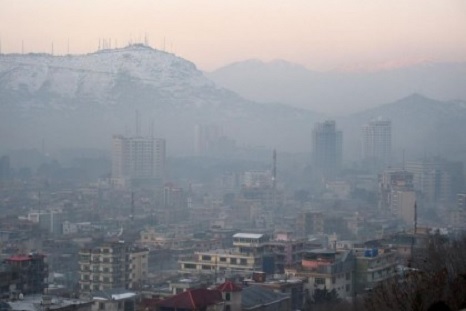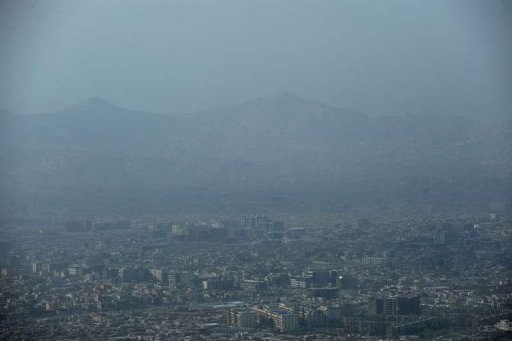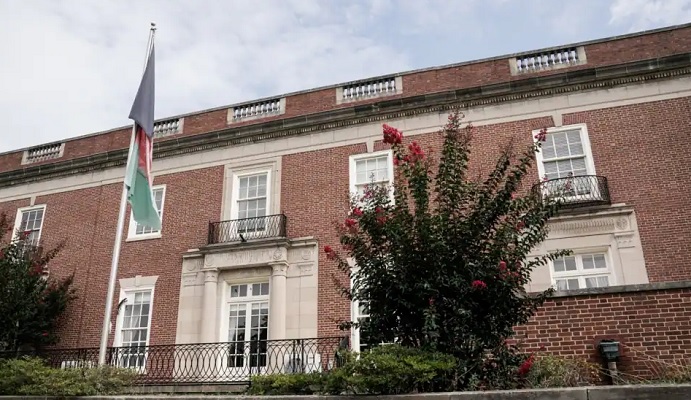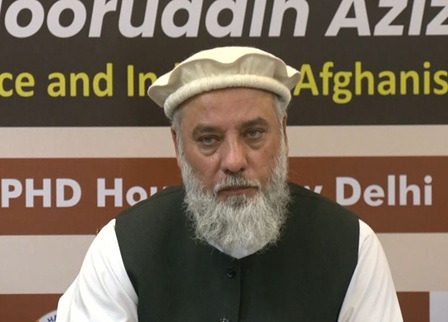
(A Once Paradise Now Becomes Hell to Live)
Qiyamud Din Ikram
Environmental Specialist
Decades of political chaos, violence, and conflict, Afghanistan is in a state of severe environmental crisis. Kabul which is the capital city of Afghanistan was once known for its beauty, but today it can be ranked among the dirtiest cities in the world. Kabul is located high up in a narrow valley between the Hindu Kush mountains, with an elevation of 1,790 meters (5,873 ft) making it one of the highest capitals in the world. The city which was known for its gardens, bazaars, and palaces and also formerly a mecca for young western hippies. The city which was designed for about one million people but it is now home to more than five million people has lost its beauty and having the miserable environmental condition. The environment of Kabul city is deteriorating day by day. Today Kabul is facing many problems like air and water pollution, inadequate sanitation facilities and improper solid waste management which will result in many health problems and causes silent and invisible deaths. The reason for these problems is the urbanization, overpopulation, lack of green zones and forest and inadequate sanitation system. These are serious environmental challenges that we are currently facing, and they are getting worse as the urbanization to the city is increased. Little is being done to tackle these issues in the capital city because the goals of economic growth (development) and combating terrorism in the country supersede the purpose of environmental protection and preservation. Just like environmental pollution is one of the most significant threat today in the capital city. It doesn’t only harm human life, but it affects all aspects of mental, social, economic and physical changes in various ways and threatens health green life. Many lives and people die each year due to environmental pollution as compared to war and terrorism in Afghanistan. Let’s discuss some of the common problems and challenges in the city.
 Solid waste management cannot be forgotten if we talk about the capital city. Population growth in Kabul over the past few years have resulted in the daily production of over 3,000 tonnes of solid waste. Some of this has been accumulating, causing severe health and environmental damage, according to Kabul Municipality. There is no modern garbage disposal center to digest the garbage produced by some 5 million people in Kabul or recycle factories in Kabul. There are no proper collection, transportation and incineration facilities in the city. If you go outside, you will find solid waste everywhere. People are just throwing their domestic waste outside from their households to keep clean only their houses and pollute the outside environment. Not only domestic waste but also the hospital waste and hazardous waste are a big challenge. People burn the waste outside without any control facilities which emit toxic gases and can cause many problems. There are more than three million people in the capital city which do not have an integrated sewage system, and according to the State of World Toilet 2007 report, Afghanistan toilets are “the world’s worst.”.”Around 5 t/day of plastic is used in Kabul and later incinerated and emit 30 t/day CO2 emissions.
Solid waste management cannot be forgotten if we talk about the capital city. Population growth in Kabul over the past few years have resulted in the daily production of over 3,000 tonnes of solid waste. Some of this has been accumulating, causing severe health and environmental damage, according to Kabul Municipality. There is no modern garbage disposal center to digest the garbage produced by some 5 million people in Kabul or recycle factories in Kabul. There are no proper collection, transportation and incineration facilities in the city. If you go outside, you will find solid waste everywhere. People are just throwing their domestic waste outside from their households to keep clean only their houses and pollute the outside environment. Not only domestic waste but also the hospital waste and hazardous waste are a big challenge. People burn the waste outside without any control facilities which emit toxic gases and can cause many problems. There are more than three million people in the capital city which do not have an integrated sewage system, and according to the State of World Toilet 2007 report, Afghanistan toilets are “the world’s worst.”.”Around 5 t/day of plastic is used in Kabul and later incinerated and emit 30 t/day CO2 emissions.
The capital city which was famous for its beauty also had Kole Hashmat Khan which is a protected site, was once a natural wetland inhabiting 157 migratory bird’s species.It was once a recreational place for the city residents but due to the few decades of unrest and conflicts, poor attention of the government, illegal encroachments and lack of awareness regarding the importance of this wetland results lost most of its birds and capacity to naturally purify and storage the water for the residents of the capital city.It is a dire need of the public to restore it and make efforts to rehabilitate this natural wetland again and beautify the city once again.
Let’s protect our environment and live a clean and green life. A clean environment is the fundamental right of every human being. It is the fundamental duty of every resident of the Kabul city to keep clean the city and protect the surrounding environment. It is not only the government responsibility to protect the environment but also the people’s responsibility to take part and support the government to take steps to clean and protect the environment to enable themselves and their coming generations’ breath in a cleaner and greener environment.
The government needs immediate and long term strategies, to overcome the above problems. The government should initiate the Clean and Green Campaigns throughout the country especially in the capital city. Plantations campaigns and programs should be started in the city. In the current situation, every resident of the capital city should use a mask whenever going outside of their houses. The government should improve solid waste management in the city. Strategy for transportation improvement program should be prepared. For mass media, it should be necessary to launch and advertise environmental campaigns. Environmental education should be mainstream in school levels. The government should establish a proper canalization system in the city and also built wastewater treatment plants. The concern authority should implement environmental law and regulations. Awareness raising campaigns should be initiated to inform the residents through electronic media, face to face programs in villages, schools, Universities and offices regarding the risk of environmental pollution and motivate and encourage them for clean and green city campaigns and programs. International organization and government should initiate such projects for environmental protection and preservation.






